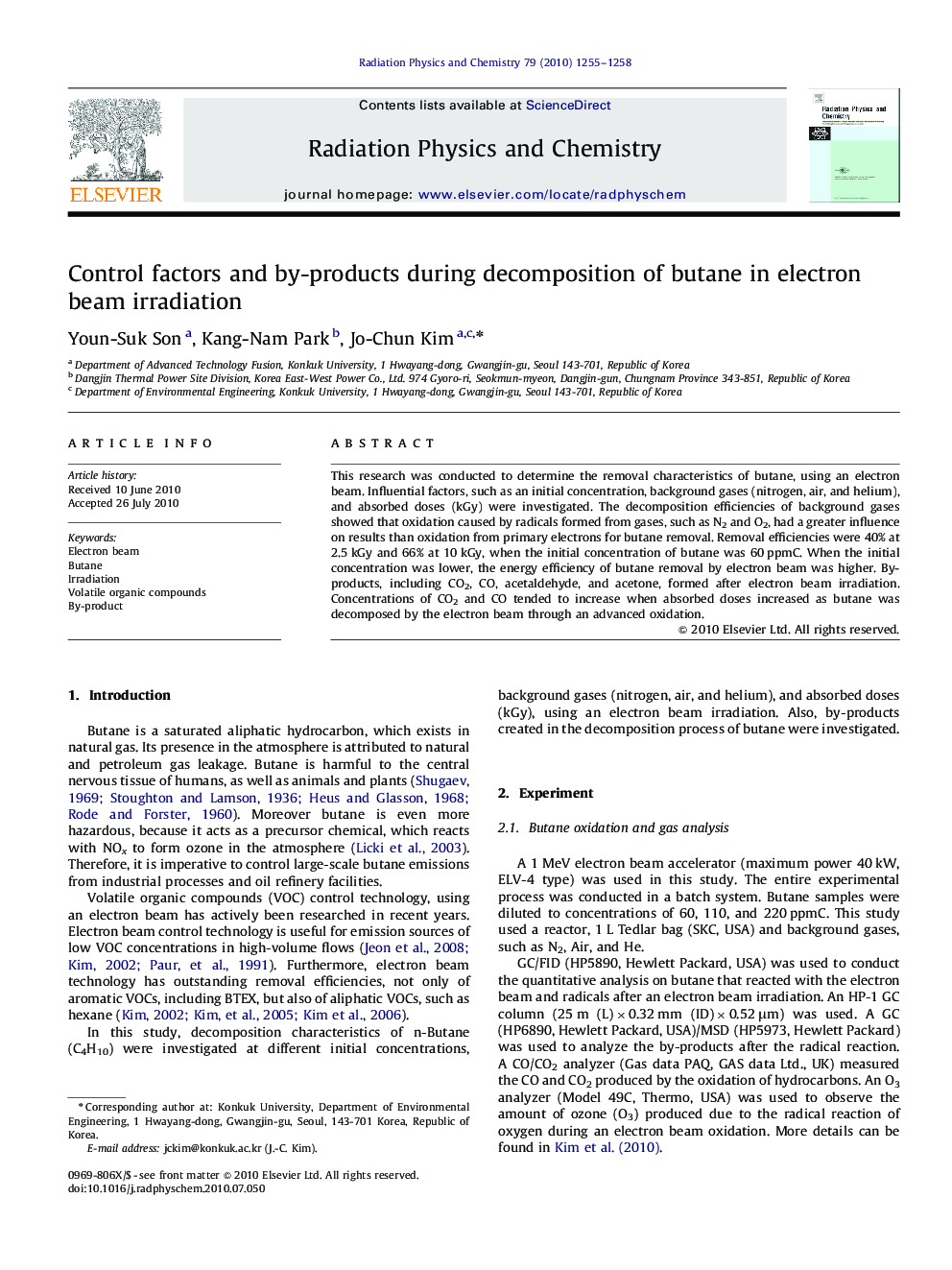| Article ID | Journal | Published Year | Pages | File Type |
|---|---|---|---|---|
| 1884322 | Radiation Physics and Chemistry | 2010 | 4 Pages |
Abstract
This research was conducted to determine the removal characteristics of butane, using an electron beam. Influential factors, such as an initial concentration, background gases (nitrogen, air, and helium), and absorbed doses (kGy) were investigated. The decomposition efficiencies of background gases showed that oxidation caused by radicals formed from gases, such as N2 and O2, had a greater influence on results than oxidation from primary electrons for butane removal. Removal efficiencies were 40% at 2.5Â kGy and 66% at 10Â kGy, when the initial concentration of butane was 60Â ppmC. When the initial concentration was lower, the energy efficiency of butane removal by electron beam was higher. By-products, including CO2, CO, acetaldehyde, and acetone, formed after electron beam irradiation. Concentrations of CO2 and CO tended to increase when absorbed doses increased as butane was decomposed by the electron beam through an advanced oxidation.
Related Topics
Physical Sciences and Engineering
Physics and Astronomy
Radiation
Authors
Youn-Suk Son, Kang-Nam Park, Jo-Chun Kim,
